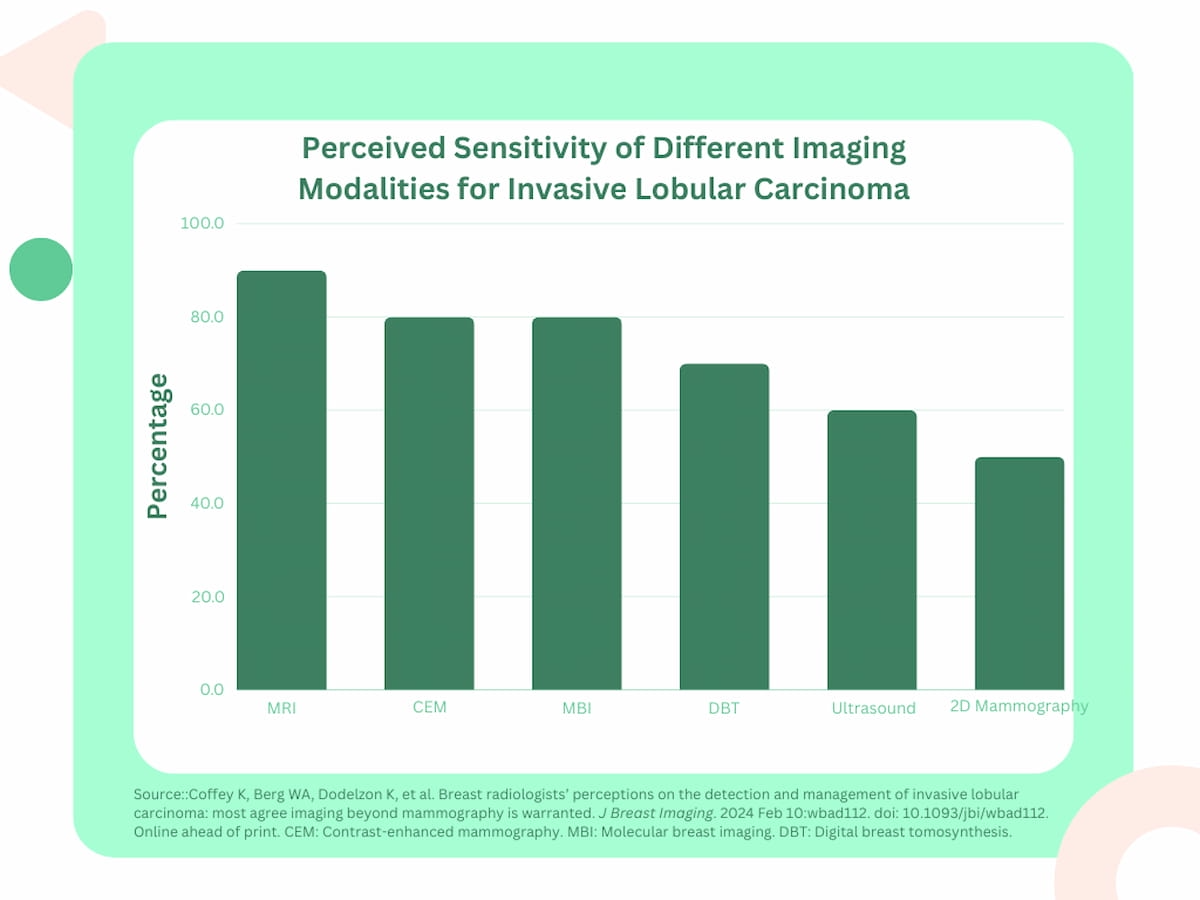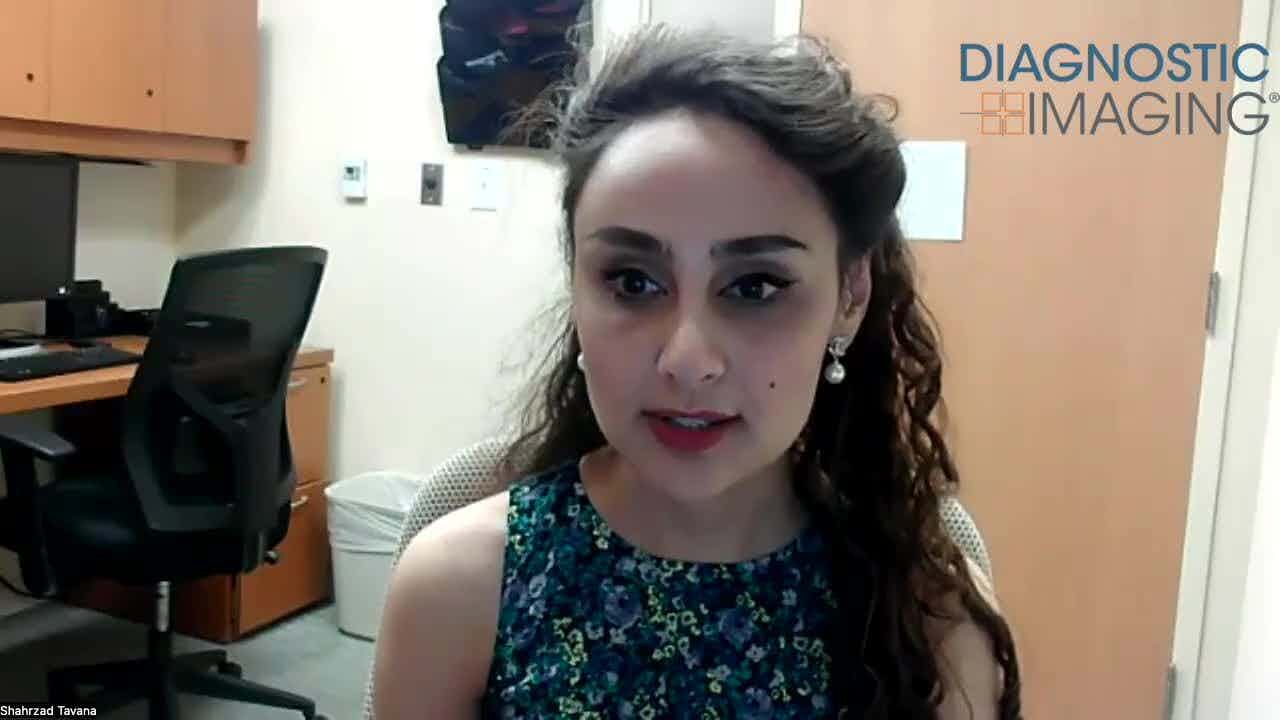Findings from a new survey of 366 breast radiologists suggest that breast magnetic resonance imaging (MRI), contrast-enhanced mammography (CEM) and molecular breast imaging are perceived as having the highest sensitivities for detecting invasive lobular carcinoma (ILC).
Developed by the Society of Breast Imaging (SBI) and the Lobular Breast Cancer Alliance, the survey utilized Likert scales to assess the perceptions of breast radiologists on imaging for the screening and staging of ILC.
According to the survey findings, recently published in the Journal of Breast Imaging, when breast radiologists were asked to share their experience on the sensitivity of different imaging modalities for ILC, MRI was perceived as having a 40 percent higher sensitivity (90 percent) than 2D mammography (50 percent).
Over 92 percent of survey respondents expressed lower confidence in detecting ILC with screening mammography/digital breast tomosynthesis (DBT) in women with dense breasts in contrast to those with non-dense breasts. Researchers found that 79.1 percent concurred that additional screening beyond mammography/DBT was necessary for ILC detection or assessment of women who had previous treatment for ILC.
The study authors noted inherent challenges with the use of mammography in detecting ILC.
“Mammographically, ILC typically presents as a mass or with subtle findings, such as architectural distortion or a low-density asymmetry that may only be seen in one view in up to 35% of cases. Calcifications are infrequent with a prevalence of 0% to 24% in the literature. Noncalcified cancers of any type are often masked by dense breast tissue with mammographic sensitivity inversely related to breast density,” wrote lead study author Kristen Coffey, M.D., an assistant professor of clinical radiology at the Weill Cornell Medical College in New York, and colleagues.
Three Key Takeaways
- MRI perceived as highly sensitive for ILC detection. According to the survey, breast radiologists perceive breast magnetic resonance imaging (MRI) to have significantly higher sensitivity (90%) in detecting invasive lobular carcinoma (ILC) compared to 2D mammography (50%). This suggests that MRI is considered a more effective imaging modality for ILC.
- Challenges with mammography in ILC detection. The study highlights inherent challenges with mammography in detecting ILC. Mammographically, ILC often presents as a mass or with subtle findings, making it difficult to detect, especially in cases involving dense breast tissue. The limitations of mammography in ILC detection underscore the need for additional screening methods.
- Recommendation for additional screening beyond mammography/DBT. A significant proportion of survey respondents (79.1%) concurred that additional screening beyond mammography/digital breast tomosynthesis (DBT) is necessary for the detection or assessment of ILC, particularly in women with dense breasts. Breast MRI is routinely recommended by 95.1% of respondents to assess the extent of ILC in women with dense breasts, emphasizing the importance of complementary imaging techniques.
Researchers found that 95.1 percent of the survey respondents “routinely recommend” breast MRI to assess the extent of ILC in women with dense breasts and 80.6 percent recommend MRI for those with ILC and non-dense breasts.
“Abbreviated MRI protocols mitigate the high cost that has traditionally limited widespread implementation of screening MRI and might lead to earlier detection of breast cancers, including ILC,” noted Coffey and colleagues.
(Editor’s note: For related content, see “Study Shows BPE Quantification on MRI Helps Predict Risk of Breast Cancer Recurrence,” “Study: Abbreviated MRI and DBT Offer Comparable Breast Cancer Detection in Dense Breasts” and “Assessing the Potential of Positron Emission Mammography: an Interview with Vivianne Freitas, MD.”)
In other findings from the survey, CEM and molecular breast imaging were perceived as having 80 percent sensitivity for ILC, followed by digital breast tomosynthesis (70 percent) and ultrasound (60 percent), The authors of the study acknowledged that 77 percent of survey respondents were unsure about molecular breast imaging sensitivity for ILC, and 63 percent were uncertain about CEM’s sensitivity for the condition.











